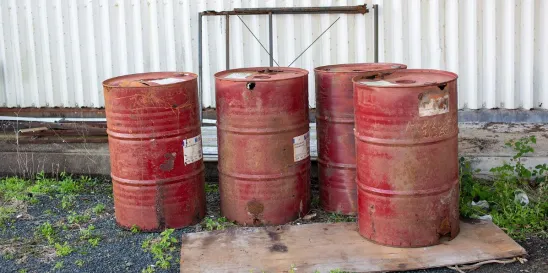On December 6, 2023, the US Environmental Protection Agency (EPA) released its “Fall 2023” regulatory agenda detailing its upcoming rulemakings, including TSCA-related rules. While EPA has continued to release multiple proposed risk management rules under section 6 of TSCA, multiple planned regulatory actions are still delayed, including the remaining half of the TSCA risk management rules. EPA’s agenda continues to reflect the following priorities: advancing risk management regulations, clarifying procedures for new and existing chemical evaluations, data collection from companies for new and existing chemicals, addressing per-and-polyfluoroalkyl substances (PFAS), and substantially increasing fees from companies regulated under TSCA.
TSCA Risk Evaluation and Risk Management Rules for Existing Chemicals
EPA continues to have a large workload for evaluating and regulating existing chemicals under section 6 of TSCA. In addition to its work on risk management rules, summarized below, EPA is currently working on risk evaluations for 20 high-priority chemicals and three manufacturer-initiated risk evaluations (MREs), is considering a request for a fourth MRE, and has now begun the process to prioritize five more existing chemicals for risk evaluation.
- New Risk Management Rules for the “First Ten” Chemicals: Section 6(a) of TSCA mandates that EPA issue risk management rules necessary to mitigate the risks of chemical substances which it determines through risk evaluations present an unreasonable risk of injury to health or the environment. EPA began evaluating these chemicals in December 2016 and has now issued proposed risk management rules for five of the ten chemicals based on risk evaluations completed after the Lautenberg Act was enacted.[1] Falling further behind in meeting its statutory obligations, EPA has further delayed the release dates of the risk management rules for five of the “first ten” chemicals from the deadlines outlined in the Spring 2023 regulatory agenda:
| “First Ten” Chemicals |
Expected Release Date for Proposed Risk Management Rule |
Expected Release Date for Final Risk Management Rule | |
| 1. | Asbestos Part 1: Chrysotile Asbestos2 | Released April 2022; supplemental notice released March 2023 | January 2024 (at OMB) |
| 2. | Methylene chloride | Released May 2023 | March 2024 (at OMB) |
| 3. | Perchloroethylene (PCE) | Released June 2023 | July 2024 |
| 4. | Trichloroethylene (TCE) | Released October 2023 | April 2024 |
| 5. | Carbon tetrachloride | Released July 2023 | August 2024 |
| “First Ten” Chemicals |
Expected Release Date for Proposed Risk Management Rule |
Expected Release Date for Final Risk Management Rule | |
| 6. | 1-Bromopropane | Delayed from November 2023 to January 2024 (at OMB) | May 2025 |
| 7. | N-methylpyrrolidone (NMP) | Delayed from October 2023 to February 2024 (at OMB) | December 2024 |
| 8. | Cyclic aliphatic bromide cluster (HBCD) | Delayed from April 2024 to May 2024 | Delayed indefinitely (“TBD”) |
| 9. | C.I. pigment violet 29 (PV29) | Delayed from May 2024 to August 2024 | Delayed indefinitely (“TBD”) |
| 10. | 1,4-Dioxane | August 2025 | Delayed indefinitely (“TBD”) |
- Revised Risk Evaluations: While EPA has moved to the risk management phase for the majority of the “first ten” chemicals, it is continuing to conduct additional work on 1,4-dioxane and asbestos. In July 2023, EPA released the Draft Supplement to the Risk Evaluation for 1,4-Dioxane, which considers certain exposure pathways, such as drinking water and ambient air, and conditions of use where the chemical is generated as a byproduct that were not included in the final 2020 risk evaluation. The peer review report on this Draft Supplement was released in November 2023, and it provides a roadmap for additional changes for EPA to consider before finalizing the risk evaluation. The proposed 1,4-dioxane risk management rule has been moved to EPA’s long-term agenda, and a proposal is not expected until August 2025.
- Proposed Risk Evaluations: While EPA has been focusing on revising the risk evaluations for the “first ten” chemicals and moving towards risk management, EPA has also been working on additional chemical risk evaluations. The Draft Risk Evaluation for the flame retardant TCEP was released in December 2023, and EPA is accepting comments on the draft until February 13, 2024. In December 2023, EPA also announced that they are seeking experts to join the EPA Science Advisory Committee on Chemicals (SACC) to assist in the peer review of a draft formaldehyde risk evaluation. Thus, it is likely that formaldehyde may be the next draft risk evaluation that is released by the TSCA program.
- Proposed Changes to Procedural Rule for Chemical Risk Evaluation: EPA proposed revisions to its existing regulation on chemical risk evaluations in October 2023. The existing regulation outlines the procedures and information EPA considers in TSCA section 6(b)(4) risk evaluations, including the scoping process, hazard assessment, exposure assessment, risk characterization, peer review, and risk determination. Upon reconsideration, EPA determined that certain aspects of the procedural framework should be revised to better align with applicable court decisions and the statutory text, and to codify Biden Administration policy changes to risk evaluation procedures. Such proposed changes include the “whole chemical” approach for issuing a single risk determination for a chemical rather than use-by-use determinations, not considering personal protective equipment in assessing risks for conditions of use affecting workers, and prohibiting the exclusion of any condition of use from the scope of a risk evaluation. The proposal also imposes new requirements of manufacturers who request risk evaluations, revises key scientific definitions, and requires consideration of aggregate exposures. EPA expecting to finalize the rule in April 2024.
- Revised Risk Management Rules for PBT Chemicals: EPA proposed revised risk management rules for decabromodiphenyl ether (DecaBDE) and phenol, isopropylated phosphate (3:1) (PIP (3:1)) in November 2023. The proposed rule revises deadlines for certain prohibitions and adds workplace protection requirements for uses not yet prohibited. EPA initiated these rulemakings in response to industry concerns about implementation when the risk management rules were originally released in January 2021, and to incorporate Biden Administration executive orders. At this time, EPA is not proposing changes to the regulations for 2,4,6-tris(tert-butyl)phenol (2,4,6-TTBP), hexachlorobutadiene (HCBD), and pentachlorothiophenol (PCTP). EPA intends to finalize the proposals for DecaBDE and PIP (3:1) in April 2024.
- Increased TSCA Fees: In November 2022, EPA took comment on a supplemental notice of proposed rulemaking to revise its fees for administering the TSCA program. TSCA requires that EPA review and adjust fees every three years. EPA has stated publicly that companies should expect to see “significant” increases in TSCA fees due to the agency’s budget and personnel shortage. The final rule has completed interagency review and EPA expects to release the rule in February 2024.
Reporting and Recordkeeping
- Tiered Data Reporting to Inform Prioritization, Risk Evaluation, and Risk Management: EPA continues to delay its plans to propose a rule under sections 8(a) and 8(d) of TSCA to establish reporting requirements for chemicals undergoing risk evaluation and risk management under section 6 of TSCA and update the reporting requirements under the Chemical Data Reporting (CDR) regulation. EPA is developing this rule to obtain information about potential hazards and pathways for occupational, environmental, and consumer exposure related to certain chemicals. EPA intends to use this information to inform prioritization, risk evaluation, and risk management of the substances regulated under TSCA section 6. The Small Business Administration is considering conducting a Small Business Advocacy Review (SBAR) panel for this rulemaking. EPA has delayed the release of the proposed rule to September 2024 and plans to finalize the rule by July 2025.
- Request Manufacturers of Certain Existing Chemicals to Submit Unpublished Health and Safety Data: EPA is developing a proposed rule under section 8(d) of TSCA to require manufacturers (including importers) of specified existing chemical substances to submit to EPA copies of certain unpublished health and safety studies. EPA states in the regulatory agenda that the chemical substances subject to this rulemaking will include existing chemical substances being considered for prioritization or risk evaluation under TSCA. EPA intends to use the submitted information to help identify chemicals for prioritization, among other uses. EPA plans to issue the proposed rule in March 2024 and plans to finalize the rule by September 2024.
- Records of Significant Adverse Reactions: For the first time in 30 years, EPA exercised its authority under TSCA section 8(c) to require that companies submit records of significant adverse human health and environmental effects that have been caused by 4,4’-methylene bis(2-chloroaniline) (MBOCA). EPA released this notice on December 26, 2023. Chemical manufacturers (including importers) and processors that have records of significant adverse reactions to human health or the environment reported to have been caused by MBOCA must submit such records to EPA by February 26, 2024. New Chemicals and Significant New Use Rules (SNURs)
- New Series of SNURs for High Priority Chemicals and PFAS: In June 2023, EPA released a proposed SNUR for “flame retardants” and is now expecting to finalize this SNUR in May 2024. In January 2024, EPA finalized a SNUR for uses of PFAS substances that are on the “inactive” portion of the TSCA Inventory, meaning the substances have not been manufactured, imported, or processed in US commerce since 2006. EPA plans to propose a series of SNURs for certain chemicals, which would require companies to submit significant new use notices (SNUNs) at least 90 days prior to manufacturing (including importing) or processing the chemical for that significant new use. EPA intends to propose SNURs for certain uses of “phthalates,” “certain solvents,” and chemicals undergoing risk evaluation. EPA expects to finalize the SNUR for certain uses of chemicals undergoing risk evaluation in May 2024, “certain solvents” in September 2024, and “phthalates” in November 2024.
- New Chemical Procedural Regulation: In May 2023, EPA proposed a rule aimed at increasing the efficiency of new chemical reviews and aligning them with the 2016 Lautenberg Amendments. EPA proposed to require more information be submitted upfront with premanufacture notices (PMNs), to include “overburdened communities” in safety assessments, and to allow EPA to request for more time to complete PMN reviews. EPA also proposed to codify some existing procedures and to eliminate low volume exemptions for PFAS and PBT chemicals. EPA intends to finalize the rule in April 2024.
[1] EPA also promulgated a risk management final rule for methylene chloride in paint and coating removers for consumer use in 2019 that was based on a risk assessment published before the Lautenberg Amendments were enacted. See 40 C.F.R. § 751.101, et seq. 2 Asbestos Part 2: Legacy Uses and Associated Disposals is not in the regulatory agenda.









 />i
/>i
